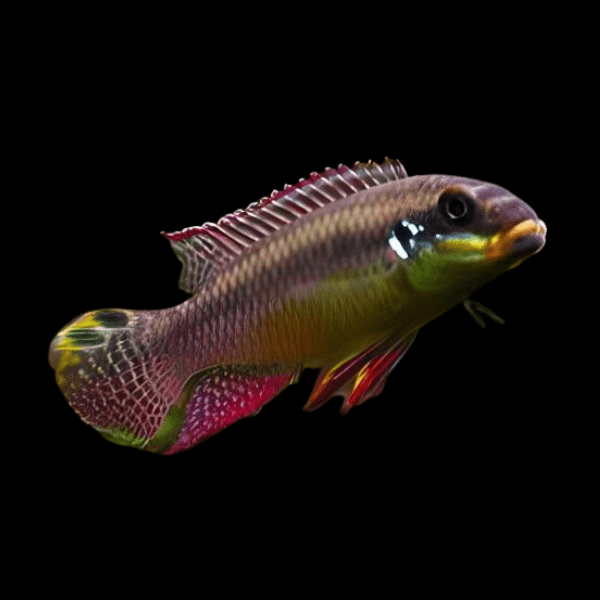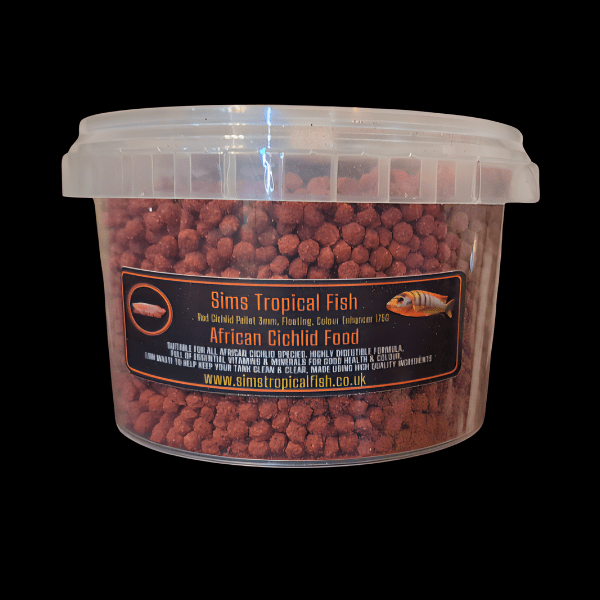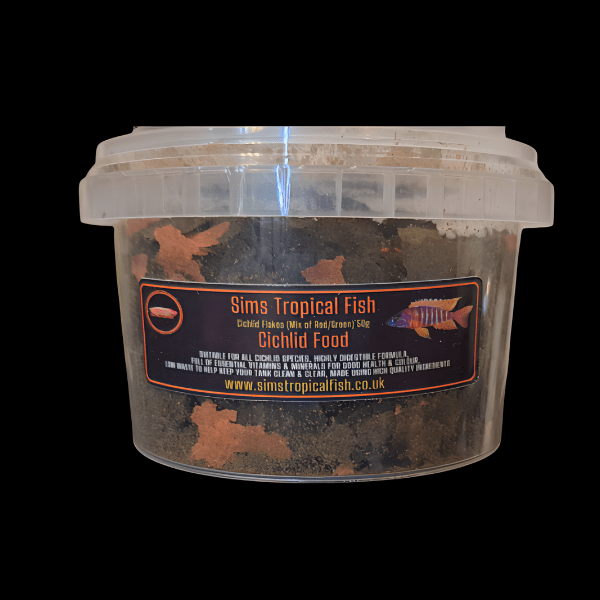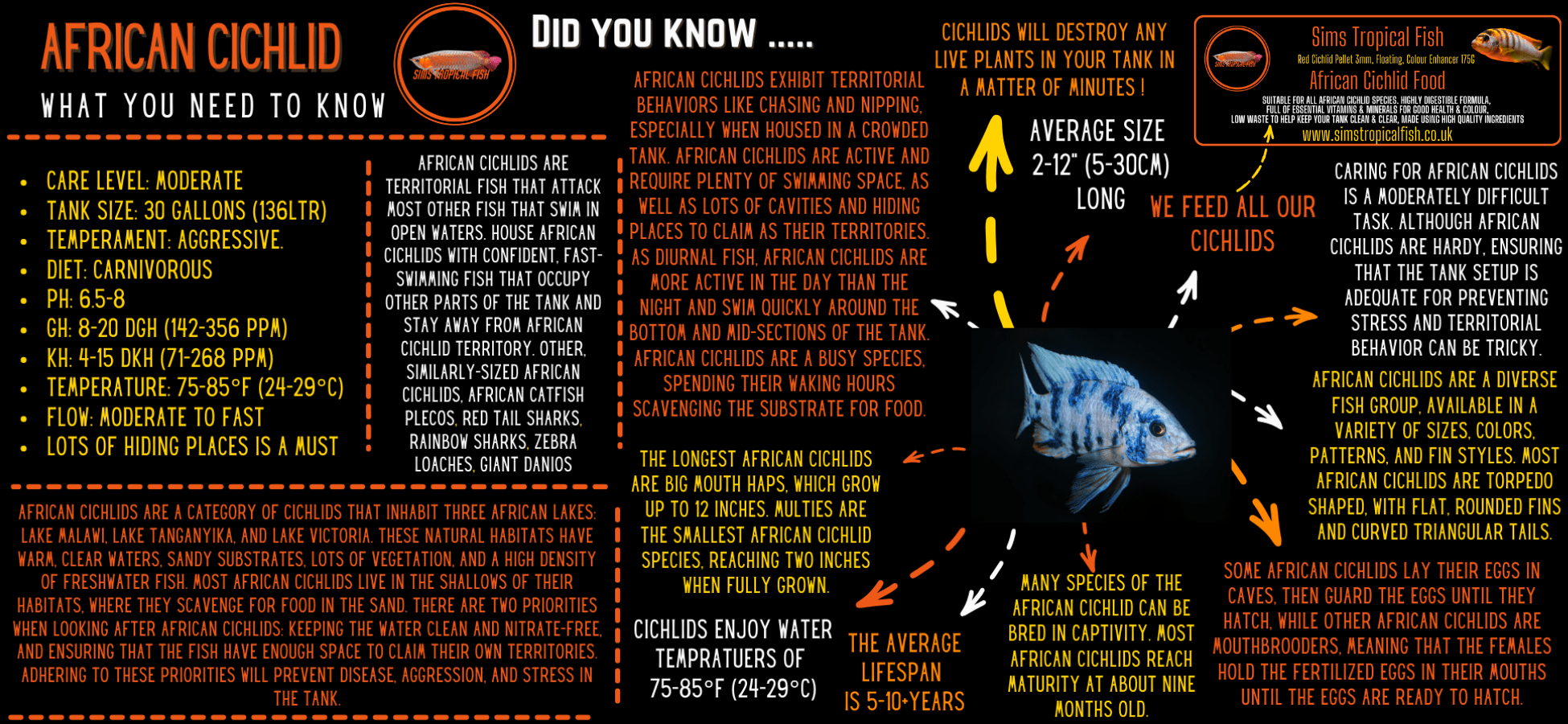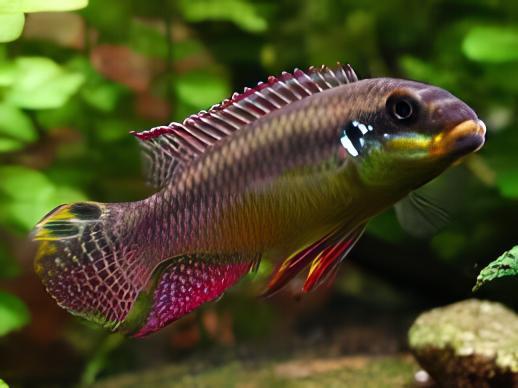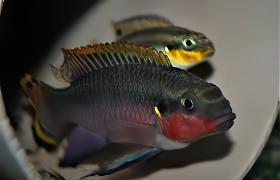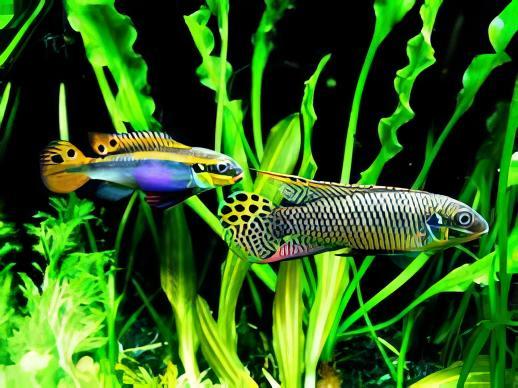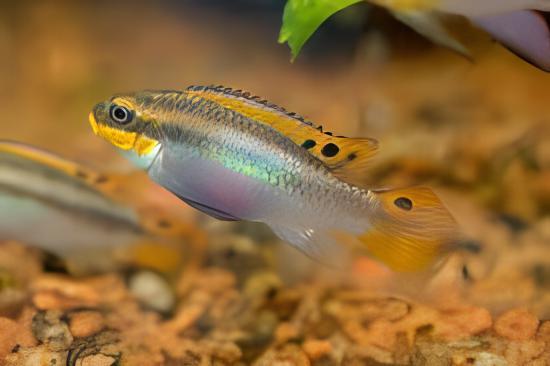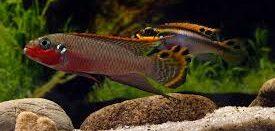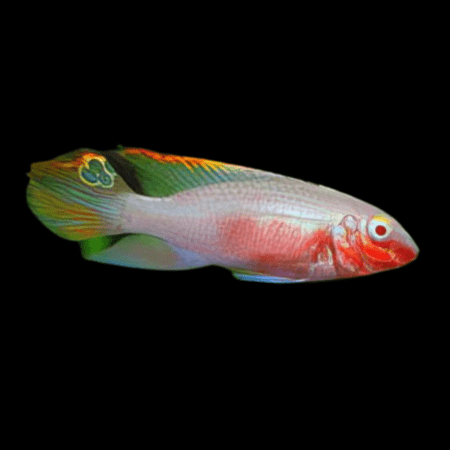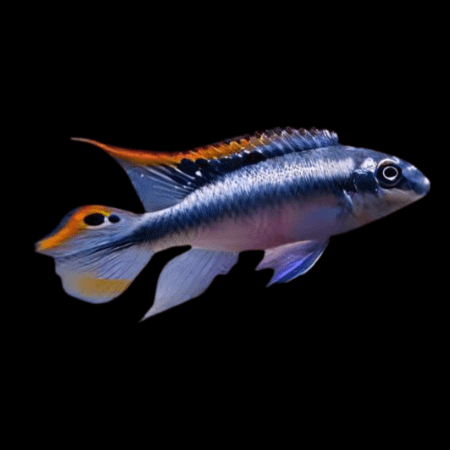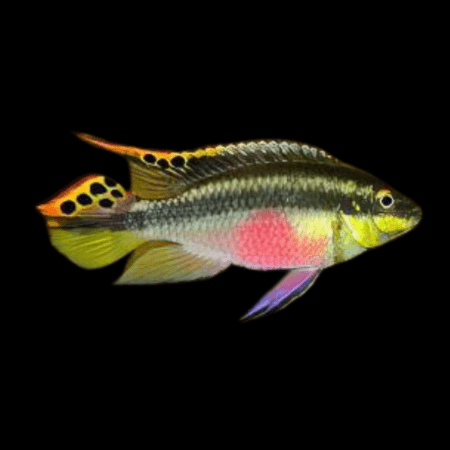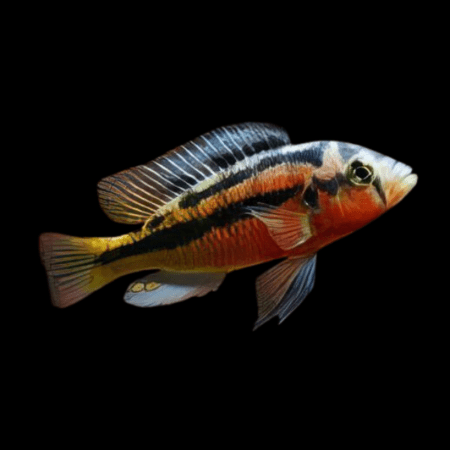Description
Wild Red Nigerian Kribensis Cichlid Pelvicachromis Sacrimontis
Also known as Giant Kribensis
Overview
Synonyms: None
Distribution: Nigeria: Niger and Cross river systems
Maximum Size: 10cm (4″)
Temperature: 22-25°C
Water Parameters: pH: 6.0-7.5, KH: up to 12 degrees
Compatibility: Specialist community
Sexual Dimorphism: Males larger and possess elongated dorsal and anal fins. Females have club-shaped pelvic fins and a red belly when in spawning condition
Feeding: Flake, granules and frozen foods
Description
Care
Giant only in relation to some of its relatives, sacrimontis is a West African dwarf cichlid which has several colour variants.
A pair of these exquisite little cichlids are suitable for community aquariums measuring 90cm or longer. Larger groups should be given much more territory. The substrate should consist of natural coloured sand or fine gravel, and dark shady areas should be provided with plenty of plants, bogwood, and caves. Java moss covered coconut shells or clean new flowerpots are particular favourite hideaways, and a pair is likely to choose such a location as a spawning site. Excellent water quality should be maintained at all times, and boisterous tankmates are not advised. If kept in cramped quarters, breeding pairs will become quite aggressive towards their tankmates, so adequate space must be provided.
As mentioned above, the giant aspect of this fish probably stems from the size of imported specimens rather than a tendency to grow larger than the common kribs which they resemble. They may be seen occasionally as Green krib, which may cause confusion due to the various colour forms. Typically sacrimontis displays darker colouration and females have an unmarked dorsal fin. Three colour forms are known – Red, Green and Yellow. These often arrive in mixed batches and sometimes mixed with P. pulcher.
Feeding
Flake, granules sinking pellets and small frozen foods such as daphnia, mosquito larvae, brineshrimp etc.
Breeding
These fish are less common in aquaria due to the impact of pH on the sex of their offspring and a reluctance to spawn in harder water. Courting pairs are easy to spot as they select and modify a spawning site, with the female displaying her belly as a sign of her readiness to deposit eggs. The male’s primary role is to defend the territory and he will require an outlet for this aggression to ensure that he does not direct this hormonally induced behaviour at his mate. Without a common enemy, many cichlid pairs tend to bicker, and a threat is required in the form of target fish (which must be able to escape the defended territory to safety for their own welfare) or even a mirror attached to the outside of one of the aquarium panes. Often, the first signs that spawning is occurring is when the pair disappear for some time into one of their favourite caves. Once the eggs have been deposited and fertilised, they will take approximately 5 days to hatch and a further 3 or 4 days to become free-swimming. A typical brood size would be around 40-50 young. The parents are very defensive of the fry and will be seen herding them around the aquarium, where they will forage on live foods such as newly hatched brine shrimp and microworms. Once the young fishes are independent it’s best to remove them before the adults attempt to drive them away.
